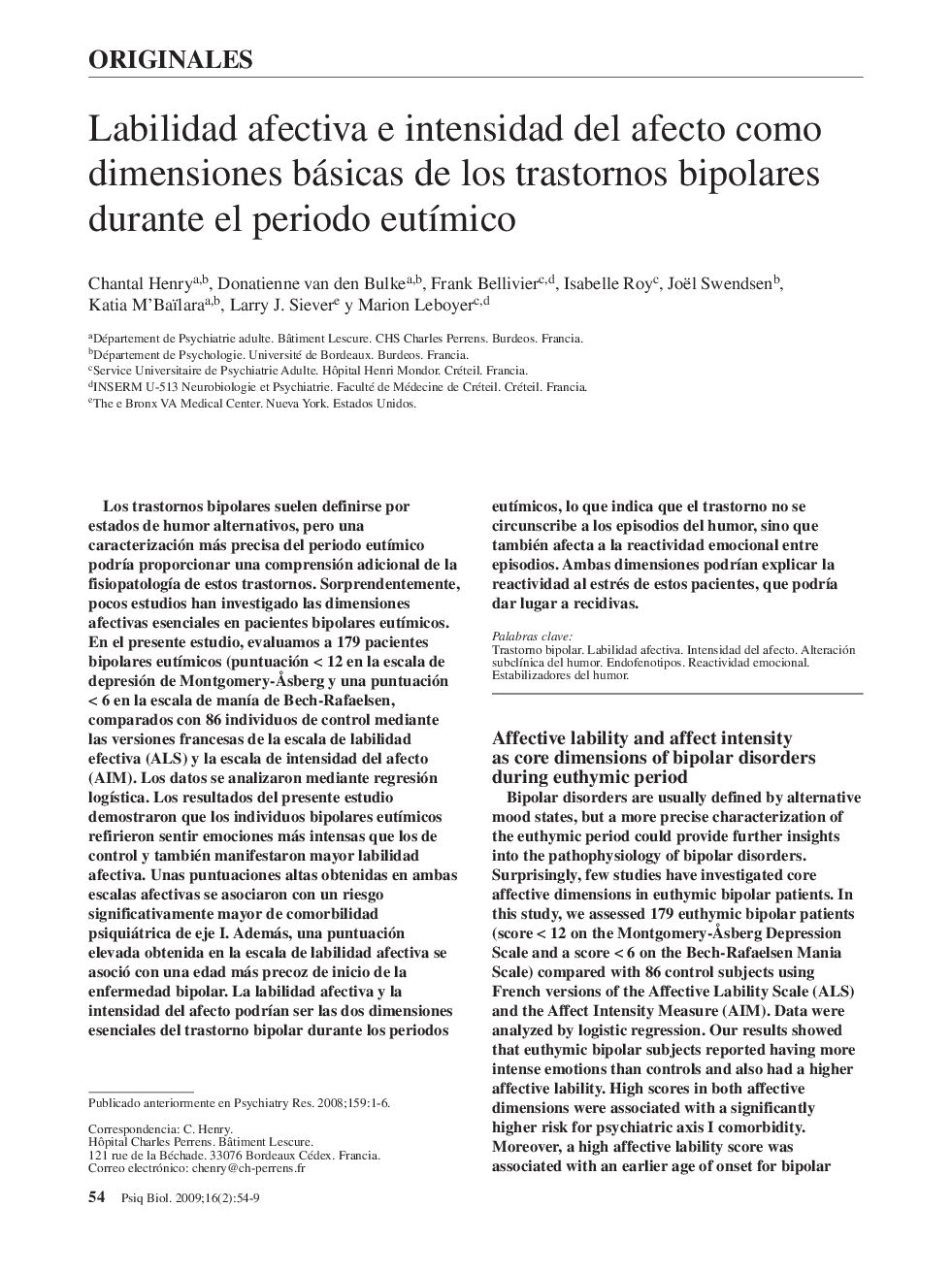| Article ID | Journal | Published Year | Pages | File Type |
|---|---|---|---|---|
| 4188890 | Psiquiatría Biológica | 2009 | 6 Pages |
Abstract
Bipolar disorders are usually defined by alternative mood states, but a more precise characterization of the euthymic period could provide further insights into the pathophysiology of bipolar disorders. Surprisingly, few studies have investigated core affective dimensions in euthymic bipolar patients. In this study, we assessed 179 euthymic bipolar patients (score < 12 on the Montgomery-Ã
sberg Depression Scale and a score < 6 on the Bech-Rafaelsen Mania Scale) compared with 86 control subjects using French versions of the Affective Lability Scale (ALS) and the Affect Intensity Measure (AIM). Data were analyzed by logistic regression. Our results showed that euthymic bipolar subjects reported having more intense emotions than controls and also had a higher affective lability. High scores in both affective dimensions were associated with a significantly higher risk for psychiatric axis I comorbidity. Moreover, a high affective lability score was associated with an earlier age of onset for bipolar disease. Affective lability and affect intensity might be two core dimensions of bipolar disorder during euthymic periods, suggesting that bipolar disorder is not circumscribed to mood episodes but also affects emotional reactivity between episodes. Both dimensions could account for the stress reactivity of bipolar patients that may lead to relapses.
Keywords
Related Topics
Health Sciences
Medicine and Dentistry
Psychiatry and Mental Health
Authors
Chantal Henry, Donatienne van den Bulke, Frank Bellivier, Isabelle Roy, Joël Swendsen, Katia M'baïlara, Larry J. Siever, Marion Leboyer,
